Strategic planning in education is complex. Beyond setting goals and mobilizing resources, it’s about weaving a district-wide narrative of progress and purpose. A successful strategic plan enhances student outcomes and cultivates equitable opportunities.
But to get there, superintendents must navigate tight budgets, address systemic inequities, and engage diverse voices to build a plan that reflects their district's unique character and values.
Community engagement is essential to this effort. However, misaligned goals, lack of collaboration, and implementation gaps pose significant challenges.
Discover how these three strategic planning models, complemented by a comprehensive AI-powered engagement platform, can help.
Currently using ThoughtExchange for strategic planning? Here’s how to make the most out of the platform.
In this Article
Why strategic planning matters in K-12 education
Effective strategic planning is critical for creating positive change in your district. Among the many benefits, strategic plans align educational partners with a shared vision, mission, and values; promote productive decision-making; and help students reach their full potential.
Furthermore, the planning process fosters resilient districts by anticipating future challenges, promoting data-driven decision-making, and enhancing accountability and buy-in among all community members.
This ensures the educational system remains relevant, adaptive, and focused on continually improving student outcomes.
Common strategic planning challenges
With many complex factors influencing its success, strategic planning in education can be a challenging endeavor. Here are three of the most significant challenges education leaders face.
Challenge #1: Misaligned goals
Excluding groups with conflicting priorities or marginalized voices from the planning process? Expect your strategic plan to stall.
Stakeholders, including parents, students, taxpayers, faculty, and staff, may have conflicting values, insights, and expertise. However, if a strategic plan prioritizes the needs of one group without addressing the concerns of another, the plan will lack legitimacy and practicality and create internal conflict.
Challenge #2: Lack of collaboration
Experiencing funding cuts or political turmoil? During uncertain times, an education leader’s first impulse can be to prioritize individual efforts over collaboration.
When departments operate in silos and prioritize protecting their resources, innovation and inclusivity suffer. Achieving cross-functional goals (like improving literacy across all subjects) falls by the wayside.
Challenge #3: Implementation gaps
Plans frequently lose momentum during execution due to unclear accountability or incomplete follow-through. This critical failure point, where even the best-laid plans face implementation gaps, can lead to a plan "sitting on a shelf."
Why does this happen? When leaders fail to assign specific, measurable KPIs and ownership to individuals and teams, and they view the strategic plan as an additional task rather than a document that guides daily practice, plans fail.
Strategic planning models for success in education
Strategic planning models provide a structured approach to creating effective and impactful plans for school districts. Each model offers unique strengths, enabling leaders to address critical areas like student performance, equity, and community engagement.
These three proven frameworks—Plan on a Page, VMOSA, and the Five-step model—simplify complex strategic planning processes into actionable steps. By selecting the right model and utilizing the appropriate tools, districts can ensure their strategies are transparent, inclusive, and aligned with their objectives.
1. Plan on a Page
This concise framework emphasizes four core areas: student performance, human resources, partnerships, and equity.
The Plan on a Page model is ideal for promoting clarity and alignment across all stakeholders. Distilling the entire strategy—including its core values, long-term targets, and one-year goals—into one digestible document ensures that everyone from board members to teachers understands the big picture and how their individual roles contribute to the district’s success.
This approach keeps the organization laser-focused on a few high-leverage priorities, preventing "planning fatigue" and encouraging nimble adaptation over the typical multi-year planning cycle.
How ThoughtExchange supports the Plan on a Page model
ThoughtExchange's AI-powered engagement platform provides powerful solutions for the Plan on a Page framework by leveraging surveys to centralize community input, quickly distill priorities, and ensure widespread clarity and alignment.
The platform's features directly support the core requirements of this concise planning model. Quickly go beyond surface-level feedback to deeply understand the root causes behind district problems, enabling efficient listening and alignment:- Ensure districts hear all voices, not just the loudest ones, by generating high participation rates in district-wide surveys.
- Quickly capture a wide range of data points and reduce survey fatigue by using open-ended questions.
- Distill complex community feedback into clear themes and pinpoint shared priorities through a participant rating system.
- Align feedback analysis instantly with district values, targets, and goals by importing multiple data sources into the platform.
2. VMOSA model
Focuses on building a clear Vision, Mission, Objectives, Strategies, and Action Plan (VMOSA) for practical, actionable steps.
The VMOSA framework is a great choice for districts working to build widespread consensus from the ground up. Its steps—from inspirational vision to specific action plans—connect daily work to the long-term goal.
This process encourages deep involvement by requiring stakeholders to define clear, measurable objectives and then develop the high-level strategies needed to achieve them. It articulates why (Vision/Mission), what (Objectives), and how (Strategies/Action Plan), providing a powerful blueprint that grounds aspirational goals in concrete, trackable results.
How ThoughtExchange supports VMOSA
ThoughtExchange is uniquely suited to facilitate the VMOSA framework by ensuring the foundational steps—Vision, Mission, and measurable Objectives—are built on broad consensus and are logically connected to strategies.
The platform provides solutions for each critical step that requires stakeholder input. Build deeper trust by demonstrating how community feedback directly shapes meaningful action and positive change:
- Get broad participation and simultaneous multi-language translation with a convenient platform.
- Capture stakeholders’ real voice in your plans with open-ended questions.
- Pinpoint the community’s top priorities and align feedback instantly with AI-powered analytics–key to the VMOSA framework.
- Turn participants’ feedback into a shareable plan that reflects their values with one-click reports and action steps.
3. Five-step model
Guides leaders from assessing current performance to defining improvements and creating a roadmap for success.
The Five-step model provides a comprehensive, continuous improvement model—making it a powerful foundation for districts focused on systemic change.
It starts with defining the future (vision/mission), then conducting a critical environmental analysis (often a SWOT analysis) to establish the current reality, setting measurable goals and objectives, developing detailed implementation strategies, and concluding with a crucial step of monitoring and evaluation.
This approach ensures every step is data-informed and provides a clear mechanism for accountability. The final step of monitoring ensures the plan remains a regularly reviewed and adjusted living document based on performance metrics.
How ThoughtExchange supports the Five-step model
ThoughtExchange is highly effective for supporting the Five-step model of continuous improvement by embedding data-informed decision-making and accountability into the entire planning cycle.
- Align participant priorities with district goals by uncovering the hidden root causes of complex, district-wide problems with real-time analysis.
- Instantly gain strategic direction by performing a comprehensive SWOT analysis on community data, incorporating multiple data sets from internal and external sources.
- Reveal deeper, year-over-year historical insights by importing existing survey data to analyze long-term trends.
- Achieve fast and accurate cross-analysis of multiple engagements throughout the year by keeping all strategic planning data in one, centralized place.
- Uncover critical insights for key decisions with tailored AI that addresses complex district-wide problems while ensuring unparalleled privacy and security.
Choose a model that suits your district’s needs, and use a survey and engagement platform like ThoughtExchange to improve engagement and data analysis while promoting understanding and buy-in.
“ThoughtExchange is a game changer because the outcomes extend beyond merely reporting the percentage of respondents to a question. Delving into their thoughts provides a more enlightening perspective on the given question.”
Elevating strategy with collaboration
Ready to take your district’s strategic planning to the next level? Whether you prioritize Plan on a Page, VMOSA, or the Five-step model, your plan's success relies on addressing the common strategic planning challenges from misaligned goals to implementation failure.
A strategic plan that reflects your community and delivers results relies on robust, inclusive engagement and efficient data analysis. By integrating an AI-powered platform like ThoughtExchange with your chosen model, leaders can move beyond gathering feedback to instantly distill complex community thoughts into actionable priorities.
“That’s what I really love about the strategic planning process and about using ThoughtExchange in creative and innovative ways to have meaningful change and impact well beyond the day-to-day operations. To really think more from a visionary standpoint. What can we do to transform how we’re currently doing things?”














